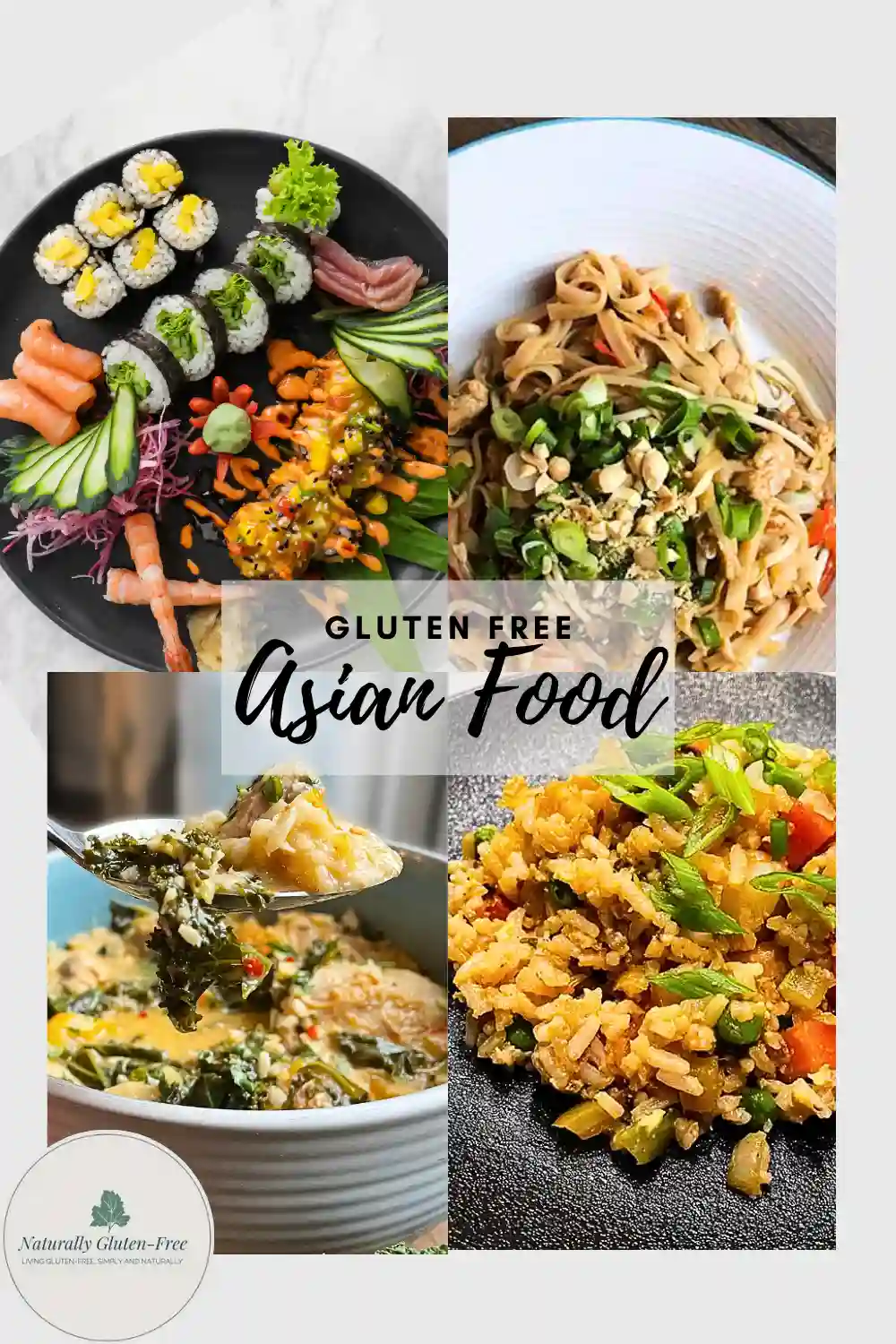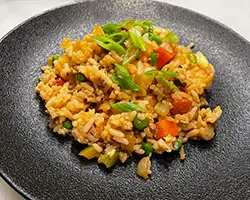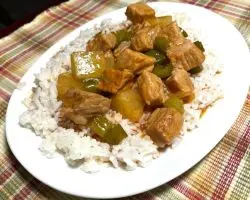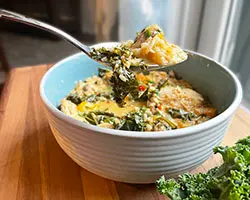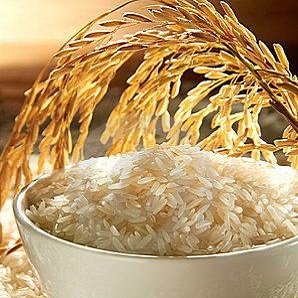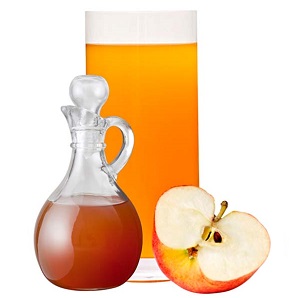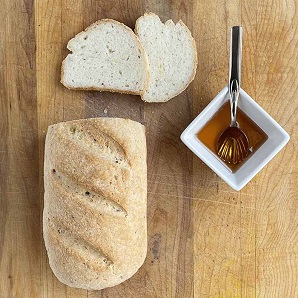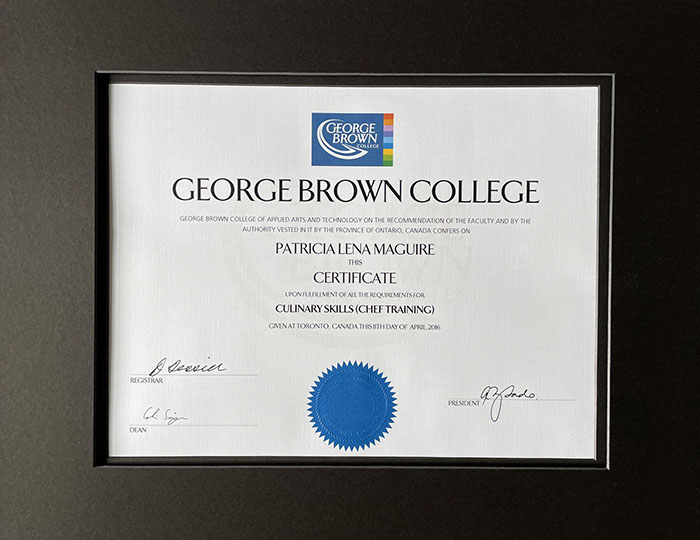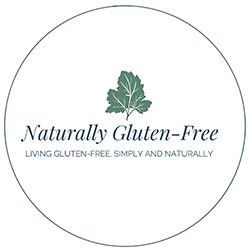- Home
- International Cuisines
- Gluten Free Asian
Travel with Your Taste Buds: An Exploration of Gluten Free Asian Food
Looking to add spark and variety to your foodscape? Gluten free Asian food might be the answer.
If you’re like me, going gluten free left you feeling like there was not much on the table that wasn't bland and crumbly. But it doesn't have to be that way! A few steps outside your comfort zones are sizzling stir fries, spicy curries and mouth-watering sushi. A world of naturally gluten free flavors!
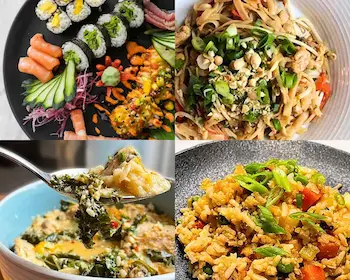
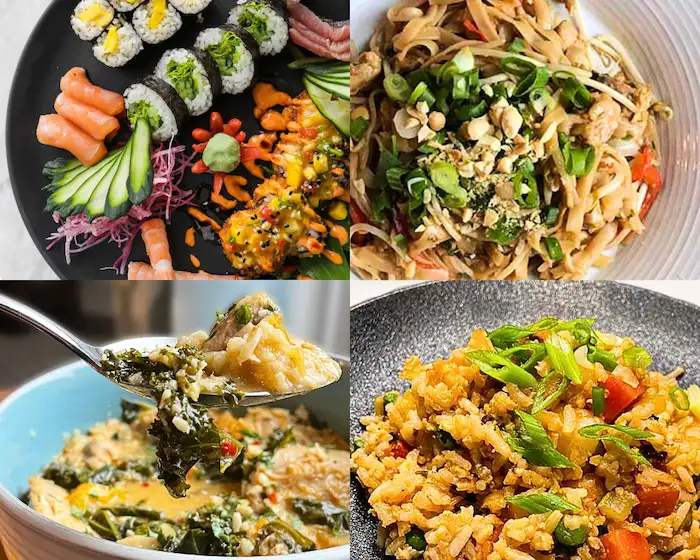
The cuisines of Asia are as diverse as the continent is vast. From China to Thailand to Japan, each region offers a unique flavor blueprint, steeped in its own rich history and culinary techniques. But there are commonalities too. Let's explore.
Rice: A Gluten Free Staple in Asian Cuisines
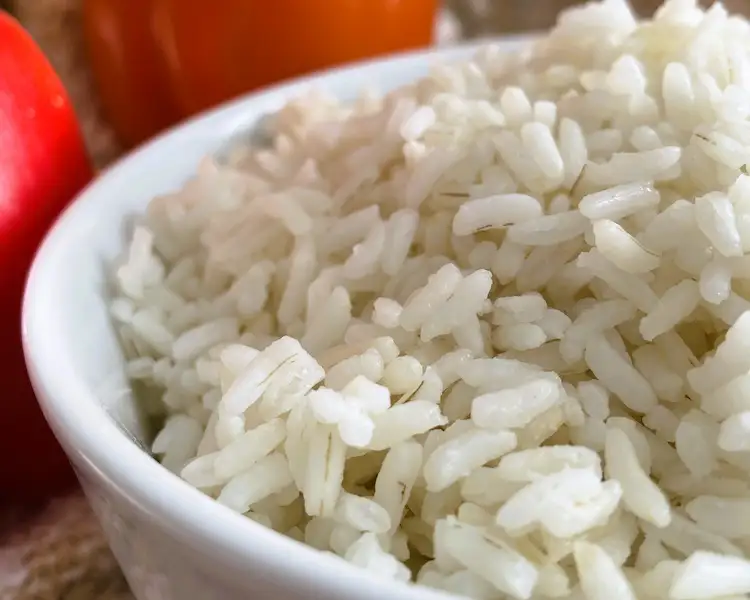
One common, gluten free element is rice. It is mild, nutty, slightly sweet and provides the perfect backdrop for crispy stir-fries or spicy curries. But rice is not one thing. There are many varieties:
- Long grain Jasmine rice from Thailand
- Short grain Calrose or sushi rice from Japan
- Brown rice grown in Vietnam
- Medium grain white rice common in Chinese cooking
All are all perfectly safe for your gluten free diet.
Are Asian Noodles Gluten Free?
You might be asking yourself if Chinese noodles are gluten free. The answer is it depends. Noodles from the north of China tend to be wheat based. Think of Lamian or Daoxiao mian noodles. Chow mein or lo mein noodles are wheat based as are ramen noodles from Japan.
Rice Noodles Bring Gluten Free Variety to Asian Dishes
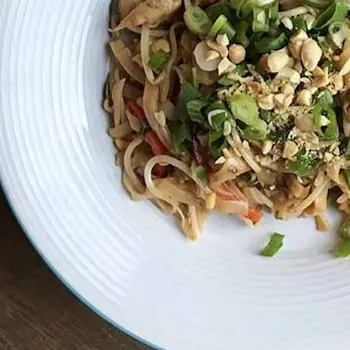
But don’t despair. We need only travel south to where the wheat fields turn to rice paddies and noodles turn to rice too. Here you find long thin rice vermicelli and wide flat pad Thai noodles. Both are common in western markets! Pop them into soups or stir-fries and you've added a whole new texture to your meal.
How to Cook Rice Noodles
Rice noodles are more delicate than their wheaty counterparts. Overcooked, they become a sticky mess. If you follow the package directions and these few simple tips you'll avoid disaster:
- Rice noodles are rehydrated rather than cooked. Immerse them into a bowl of hot water from the kettle and they will soften and separate.
- Thin vermicelli rice noodles take about 3 minutes and the wider pad Thai noodles need closer to 10.
- If you’re adding rice noodles to a soup or stir-fry, you don’t need to cook them. Rehydrate as above and they will cook in the broth or pan.
- If you’re not using your rice noodles right away, coat them in a little oil and set them aside.
How to Use Rice Paper Wraps
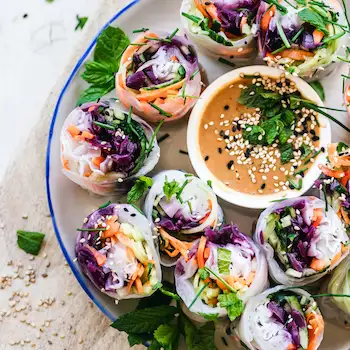 Photo by Ella Olsson on Unsplash
Photo by Ella Olsson on Unsplash These dinner plate sized sheets of rice paper are versatile, and fun. Rehydrate for a few seconds on a plate of warm water and they become almost completely transparent. Colorful fillings like tender pink prawns or spicy ground beef show through like treats behind a showcase window.
Rice paper wraps are the little cocoons that hold your spring rolls together. Roll up your filling and deep fry to a satisfying crispy finish.
Fold in your favorite sandwich fillings and for an alternative to bread or tortillas.
You can also use them to make those cute little envelopes for your Chinese dumplings.
Gluten Free Chinese Food: How to Avoid the Pitfalls and Enjoy Your Favorites
We’re starting with the hardest Asian cuisine to do gluten free. At least if you're eating out.
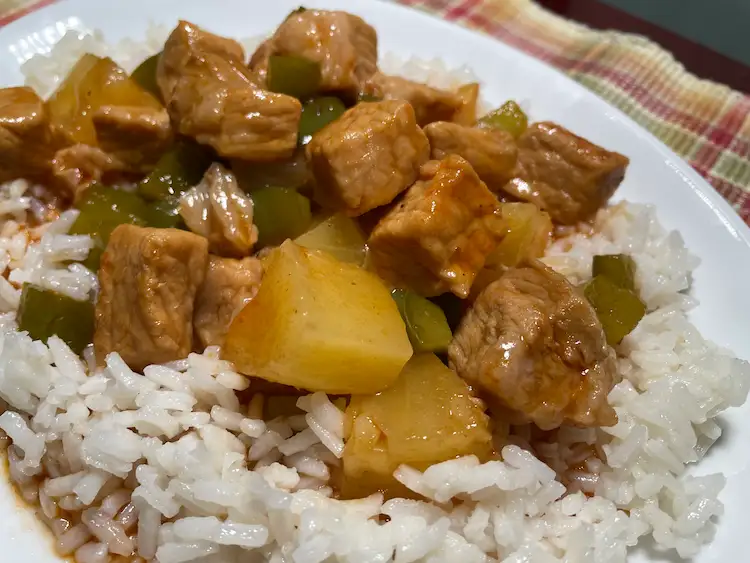
What comes to mind when you think of Chinese food? Is it battered and deep-fried morsels in a sweet sauce? There's that, and so much more.
Gluten free Chinese food features lots of crispy stir-fried veggies. Think bean sprouts, shredded carrot and strips of sweet bell pepper. Sometimes tender marinaded beef or chicken are added. The problem is the heavy use of gluten containing soya sauce in Chinese cooking.
Can A Celiac Person Eat in a Chinese Restaurant?
Between the deep-fried batter and the soya sauce, I’m more than a little uncomfortable in most Chinese restaurants. Add in a language barrier and sauces that I’m not sure how they are thickened and for me it’s usually not worth the risk.
But there are options. If you’re craving Chinese and you live in or near a city, look for a dedicated gluten free Chinese restaurant. In Toronto we have:
- Ritz Gluten Free Asian Kitchen with locations on Yonge and St. Clair
- Chin Chin Street Side Kitchen near Downtown
- Bean Sprout in Vaughan.
Do a quick google search of your city. Are there gluten free Chinese restaurants?
Making Your Own Gluten Free Chinese Recipes
Here are a couple of my favorite make-at-home Chinese recipes:
Gluten Free Thai Food: Add A Spicy, Creamy Sparkle to Your Meals
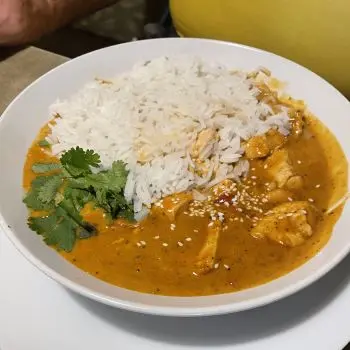
Thailand is a small country on the Indochinese Peninsula. It’s surrounded by Cambodia, Laos and Myanmar with the Gulf of Thailand to the south. I’ve never been, but I’ve heard the beaches are incredible!
Thai cuisine blends sweet, salty, spicy, and sour in a way that makes every dish uniquely satisfying. Many feature rice, rice noodles, plenty of vegetables, and a variety of spices. This makes Thai food optimal for the gluten-free diet and my go to when I'm craving gluten free Asian food.
Although soya sauce is used in Thai cooking, it's not as ubiquitous as in China. You're likely to find fish sauce instead.
Pad Thai, a globally loved street food, is traditionally gluten-free. Imagine a fragrant mix of rice noodles stir-fried with tofu or shrimp, bean sprouts and eggs. Then top it off with a handful of crushed peanuts. Some restaurants might use soy sauce containing gluten, so ask to be sure it's safe.
Cooking Gluten Free Thai Food at Home
Fluffy jasmine rice and spicy as you like creamy curries are incredibly satisfying to make in your own kitchen, and Thai cuisine uses coconut milk in those rich creamy sauces so a dairy intolerance is no problem. You can find Red and green Thai curry pastes in most well stocked grocery stores, or if there is an Asian market nearby, even better. Check labels of course, but they are likely gluten free.
Here are a couple of my favorite gluten free Thai Recipes
Gluten Free Japanese Food: Mild Elegance Meets Party Food Morsels
Now let’s turn our sights to Japan, a 3000 km long archipelago off the coast of China and the Korean peninsula.
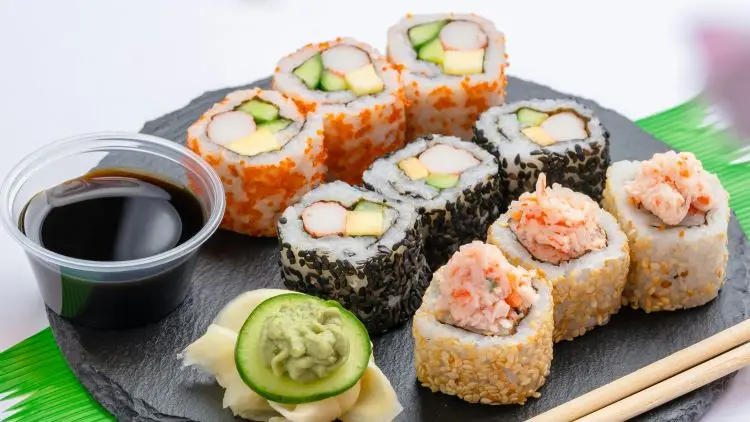 Photo by Eiliv Acer on Unsplash
Photo by Eiliv Acer on UnsplashJapanese cuisine has elements in common with the rest of Asia, and some very unique features.
Rice as the staple grain is the big commonality and is enjoyed at nearly every meal. Or try naturally gluten free soba noodles from buckwheat as the basis of your meal. Some Japanese noodles like udon, somen or ramen are made from wheat so be careful if you see those on a menu.
Japanese cuisine is light on red meat and on spices, due in part to the influence of Buddhism. Japanese food therefore has an elegant and mild character that focuses more on beauty and texture than robust flavors. Instead, you’ll find lots of fish and seafood, crisp vegetables and fragrant flowers. I know what you’re thinking…sushi.
Is Sushi Gluten Free?
Yes you can have some kinds of sushi if you’re on a gluten free diet. Many Japanese restaurants are gluten-aware and will indicate choices on the menu.
There are snags to watch for though, so be on the lookout:
- Soya sauce is often made with wheat. Ask for a gluten free version or bring your own.
- Some of the fish is marinated in sauces that contain gluten. Check the menu or ask your server.
- Tempura is seafood or vegetables deep fried in a crisp light batter traditionally made with rice flour. But many restaurants use wheat flour, so you need to ask. Also beware of cross contamination in the fryer.
- Imitation crab is often served in sushi and may not be gluten free.
What Other Japanese Dishes Are Gluten Free?
Always check ingredients or ask your server. But generally speaking these popular Japanese items are gluten free:
- Sashimi
- Miso soup
- Wasabi
- Tofu
- Soba noodles
- Nori
Will You Try Gluten Free Asian Food and Add Variety to Your Diet?
So you see, eating gluten free doesn’t have to mean bland and boring. Try making your own gluten free Asian dishes or order in from a well-informed restaurant. Break out of that comfort zone into a culinary journey that promises healthful eating, and a vibrant and exciting experience. Who knows? You just might fall in love with gluten free Asian food!
